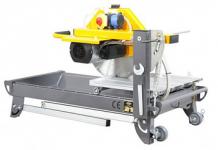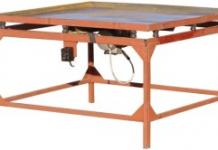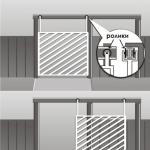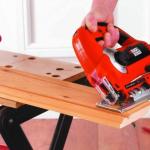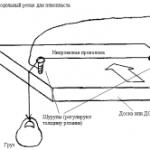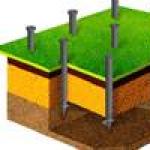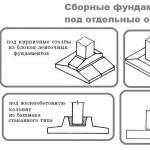Trading platforms offer a wide variety of power tools from different manufacturers. There are a variety of models: both cheap amateur ones and sophisticated professional ones that cost a lot of money.

Jigsaws occupy a special place; they are also in great demand. There are units of various sizes from domestic and imported manufacturers.

Device
A jigsaw is a tool which is suitable for working with a wide variety of materials:
- solid wood;
- plywood;
- hardboard;
- soft metal;
- PVC materials.
The versatility of this wonderful tool allows you to perform complex, complex work that no other tool can do. Saw blades are actively involved during operation, they are subjected to considerable mechanical stress, and after a certain period of time they fail.

The jigsaw mechanism also experiences heavy loads. If such a unit is used regularly, then you should know its layout and how it works.
The design principle of this unit is simple; its main blocks are:
- engine;
- gearbox;
- stock.

Air cooler, speed control, pendulum movement unit - these are all auxiliary holding elements that ensure the duration and productivity of work.

In some models, the electric jigsaw is provided with a separate start button, which can also regulate the torque frequency.

From the point of view of transformation of electrical energy, the following process occurs:
- an electrical impulse entering the tool goes to the brushes (they are made of graphite), which ensures the appearance of torque on the rotor;
- the rotational impulse is transmitted to the gearbox - a unit that transforms torque into translational motion, which is directed to the rod.

In this scheme, a special role is given to the fastening unit, which ensures a reliable connection of the rod with the moving blade.

As you can see, the design principle of a jigsaw is the same for all models. The difference is only in the quality of assembly, fitting of components, and materials.
Knowing the “general outline” and the algorithm of operation of the elements, it is easy to understand what breakdowns and malfunctions may occur, as well as find out the reasons why they arise.

Frequent malfunctions
Like any mechanism, a jigsaw can experience various malfunctions:
- the tool cuts crookedly, the blade “leads” to the side at an angle that is unacceptable;
- The fastening of the cutting tool is broken, the file flies out;

- the unit does not turn on;
- the gear wheel or its teeth breaks;

- the worm gear that is anchored wears out;
- the blade jumps or falls out when sawing;
- the clamp does not work, the file does not hold;

- The teeth on the collet are crumbling.
The nature of the work of a jigsaw is to cut curved cuts. The curvature can be different, so there are also some indicators here. A large load during such work falls on the main support roller, which often becomes unusable. To prevent it from failing prematurely, it is recommended to comply with all operating modes.

Mechanisms often fail when mechanical microparticles come into contact with dynamic elements. It is imperative to carry out timely preventive inspection and cleaning of the internal components of the device. It is necessary to wash off the unit with a special composition WD-40. It is also useful to use a vacuum cleaner to clean the power tool: the cause of gearbox failure may be if dust gets on it.

Rod failure most often occurs during mechanical damage.

Breakage of a tooth on a collet also happens most often through the fault of the master. This happens if you fasten the working surface too tightly.

The worm gear cannot withstand the load if you “drive” the tool in afterburner.

- the bearing wears out quickly;
- the cam block is erased;
- the gear becomes unusable.

Also a fairly common breakdown is the abrasion of the brushes, which are easy to replace. Preventive cleaning of operating components is a necessary thing. Lubrication should also be done regularly.

Another common malfunction is the holder breaking, causing the blade to fall out.

Often the jigsaw mount loses its rigidity, resulting in play, which affects the quality of work. The clamps are almost impossible to repair - they have to be replaced.
Some unscrupulous manufacturers make bolt fasteners from fragile materials. Such cheap alloys break at the slightest load and are extremely short-lived - you have to replace the “original” bolts with fasteners made of durable steel.

The more complex the design, the more often breakdowns are possible. Modern gadgets that manufacturers “stuff” the tool with do a disservice. They often cause breakdowns of electrical appliances.

For example, the standard web feeding function (it exists in almost all models) significantly helps in work, reducing stress on the worker’s hands. However, the presence of such a mechanism leads to a lot of wear and tear on individual components of the unit, such as:
- guide roller;
- bushings (especially in the stem).
Another example can be given when there is too much load, which can be caused by the physical impact of an inexperienced worker: if the model is not too expensive, then, as a rule, the file in it can break the fragile holder.

The support roller may suddenly freeze. The reasons may be the following:
- lack of lubrication;
- bearing failure.
To change the roller, you need to dismantle the microsaw, separate the body and unscrew the bolts. Pull the roller out of the niche and put it in “fresh”. You can do this operation yourself - it is not complicated.

If the protection is triggered, which protects the unit from overheating, then there may be several reasons, for example, the air duct is clogged with dust, which does not allow the engine to fully cool. You should take a brush or an old toothbrush and clean the sections of the grille. You can also use the following “tools” for cleaning:
- a needle;
- cotton rag;
- alcohol.
To protect the electric motor from overheating, there is thermal protection. It may work due to contamination of the air intake grilles with dust and sawdust. Clean the grates and let the jigsaw cool a little. After some time, the thermal switch will turn on automatically.

The cord may be damaged; in this case, the engine will not work. You can check the cord using a tester. If there is a defect, the readings on the device will be equal to infinity. The cord is inexpensive and will need to be replaced.

There are models that operate from portable chargers. When working with such jigsaws, you should not allow the battery to discharge more than 15–20%.

If this happens regularly, the battery will lose its resource, which will significantly reduce its service life.
Repair
Before you repair the instrument yourself, it is recommended that you gather information Paying attention to some phenomena that occur during malfunctions:
- the case gets very hot;
- extraneous noise occurs at the very beginning of the unit’s operation;
- Sheaves of sparks appear when the jigsaw begins to operate.

There are two types of breakdowns that you can fix yourself:
- the electrical unit fails;
- mechanical elements break.
If the rotor or stator breaks down, then it is impossible to fix such a malfunction yourself - the easiest way is to take the machine to a service center. This usually happens due to excessive contamination of working units and lack of preventive cleaning of the unit.

If the brushes are worn out, you can replace them yourself - there is no difficulty here.
If the regulator that is responsible for the speed is broken, then only a specialist can repair this unit. The tool disassembles in a matter of minutes. The case can be “halved” by unscrewing the screws. Old grease must be removed first, and after cleaning, new grease must be applied.

Rod bushings are not sold in stores; you can only find such elements among used tools. Different models have almost identical bushings.

The easiest to repair are devices with a rounded stem exit. The bushing is either selected, or the cone-shaped cavity is enlarged by stuffing it onto the cone. Such procedures remove play if it occurs in the fastening.
For some models, special clamping clips should be made; for their installation, copper foil is used (as a gasket). If the model has a budget price, the stem is usually made of a metal plate. Manufacturers save on metal, so the thickness parameters of this plate are extremely small. The plate often cannot withstand the load and bursts.
In this case, the machine is disassembled, each stage is recorded and photographed with a digital camera. The part is removed (the plate has a complex configuration). Fragments of the plate are taken by the owner in order to correctly select the required spare part on site. After installing a new part in place of a broken one, be sure to renew the lubricant.
Changing brushes does not require much qualification. It is enough to open the body of the jigsaw and remove the worn brushes, carefully wipe all the cavities and components of the unit with a piece of bandage. Then new brushes should be installed in place of the old elements. It is best to use alcohol for cleaning.

The advantage of modern models is that there is no need to use a soldering iron. The thermal fuse also fails, but not as often. This part is easy to replace. If sparking is observed in the unit, this primarily indicates that the brushes are worn out or the lubricant is outdated.
Any tool requires preventive inspection - this is a prerequisite for it to serve for a long time. In this case, there will be no need for additional modifications or material expenses to put it in order.

After completing the working cycle, the power tool is de-energized - it is not recommended to forget this rule. On some jigsaws, the socket has an additional fuse, which may fail - this should also be kept in mind.
Start button
The button, which is responsible for starting operation and changing operating modes on the jigsaw, plays a big role. If it breaks, then this element can only be found in specialized repair shops or online stores. Replacing such a unit is not difficult - just free it from the wire by unscrewing the bolts holding the terminal blocks. Modern designs are made in such a way that there is no need to use a soldering iron.

Replacing the saw holder
The most common problem with jigsaws is replacing the quick-release fastening of the saw blade. Fastening requires a tool of a certain thickness. If its size is smaller, the file will “play”.
There is a way out of this situation: you can install a holder with bolts. Then the equipment will become completely universal. To do this, cut the square reinforcement into two pieces, drill holes in them with a diameter of 3–4 mm and secure them with M5 bolts. You will have to tinker, because the operation is quite labor-intensive, but after this the tool will cut accurately.

You can also reduce the movement of the file in a perpendicular direction to the movement vector. A plate is cut out of an aluminum sheet (it must correspond to the parameters of the jigsaw sole). Then a notch is cut according to the dimensions of the tool. Burrs are removed with a small file. Bevels must be made on the protrusions. A plate is cut into the saw blade and mounted on the sole of the tool.
Holes are then drilled to install the fasteners. A piece of plexiglass is inserted into a metal plate. You just need to make a cut at the point where it will be based.
As a result, during operation the blade will have a restriction in lateral movement at the point of the cut itself. This will make it even more straightforward.

Prevention of breakdowns
Preventative measures always extend the life of any tool, including jigsaws. To begin work, unscrew the screws and open the housing. Using alcohol and a cotton cloth, it is necessary to clean all components from old grease. Then new lubricant is applied to the required points (in accordance with the recommendations specified in the instruction manual). It is very important to process the dynamic parts of the unit (current, gearbox).
There are also a number of preventive measures:
- use only “original” parts;
- produce fabrics by 70 percent and then change them;
- use only canvases that correspond to the nature of the work;

- during work, you should not “strain” yourself with excessive mechanical loads;
- Clean the instrument from accumulated dust at least once a week;
- use WD-40 lubricant;
- use a vacuum cleaner for cleaning;
- do not hit or drop the tool - this often leads to damage to the supporting rod;
- Do not tighten the file in the mount too much;
- for materials that are too dense, there are special devices that must be used;
- each material has its own optimal operating mode (speed, angle of inclination, etc.);

- the base of the support roller must be treated with a special technical lubricant at least once a week;
- You should actively use technical brushes to process the tool after finishing work;
- You should always monitor the ventilation grille of the instrument and clean it of mechanical microparticles.
Choose a file with the appropriate number of teeth for each case. For aggressive sawing of structural timber, saw blades with a tooth pitch of 4 mm (6 tpi) work well, but they are too coarse for carpentry work. In these cases, use saws with a tooth pitch of 2-2.5 mm (10-12 tpi) for large radius fillets and 1 mm (20 tpi) for small radius fillets (25 mm or less) in hardwood, as well as any radii in plywood and melamine-coated particle boards.
In addition to the number of teeth, the design of the files should also be taken into account. For decades they have been set with the teeth alternating to the right and left, as shown. This arrangement ensured fast and efficient sawing, but there was a deterioration in quality. To solve this problem, non-set teeth are now being produced, as shown, which do not tear the wood fibers, but cut it like a surgical scalpel. The result is a smoother cutting surface. That's why we now use Clean-For-Wood and Xtra-Clean-For-Wood files from Bosch. It should be taken into account that these saws can scorch the wood in cases where their speed is set too high or the feed is too slow. We advise you to first practice on scraps of wood of the same species and find the best ratio of saw speed and tool feed. Remember that the cost of saw blades is only a small fraction of the cost of the material being cut. You should catch the moment when it’s time to replace the file. If it begins to scorch (burn) the wood, tear fibers where this did not happen before, or suddenly requires more feeding force, you should stop work and change the saw.


You can reduce the likelihood of chips on the front side of the workpieces by using an additional anti-splinter sole. Make it from hard hardboard 6 mm thick and attach it to the standard jigsaw sole with screws or double-sided tape. Lightly round the corners and sharp edges of the sole with sandpaper to prevent scratches on the workpiece.
Sooner or later you have to face trouble in the form of a breakdown of your favorite instrument. Some will contact the service center, others will buy a new unit, others will repair it themselves. In this article we will talk about self-repair of a failed Bosch jigsaw saw holder.
So, the reason for the file falling out of the clamp is, as a rule, a broken pin that clamps the file, or worn pin guides on the metal body itself.
If the reason is a broken pin, then the issue is easily resolved. An analogue is made from a rivet rod of suitable thickness. D of the factory pin
How to change the saw blade attachment Einhell BPS 520E jigsaw
- Video duration: 03:32
- Video uploaded by: USSR
- Video release date: Oct 6th, 2017
- Video views: 2,706
- Video likes: 4
- Video dislikes: 2
This video shows how to change the blade mount on an Enhell jigsaw. You will see that you can change the blade mount in just five minutes. ===================================================== = Main characteristics: Jigsaw Einhell BPS 520E Power: mains 220 Power: 520 W No-load strokes: 1/min 480-2500 Weight: 2.6 kg Manufacturer: Einhell Speed adjustment: YES Support plate adjustment: 45° Pendulum stroke: 4- x step movement max cutting depth: steel 5mm wood 60mm plastic 20mm
Why do jigsaw holders break?
- Video views: 434,885
- Video likes: 1,500
- Video dislikes: 688
In my case, this is a “zenith” jigsaw, but the method is suitable for all “crooked” jigsaws
Simple repair - jigsaw Bosch pst 900 pel
- Video duration: 06:13
- Video uploaded by: Life is a hobby
- Video release date: Apr 15th, 2017
- Video views: 5,192
- Video likes: 33
- Video dislikes: 5
Repair of the saw attachment unit. Good and inexpensive metal files - http://ali.pub/1euk4n A good screwdriver - link where you got it - https://goo.gl/l8sWvz delivery to Russia in only two weeks - by the transport company SDEK. The courier delivered to the door. Simple and honest 7% refund after purchase on Aliexpress and other sites - http://epngo.bz/cashback_index/ih1ov0
How to insert a file into a jigsaw (4 types of fastenings)
- Video views: 1,789
- Video likes: 1
- Video dislikes: 0
How to attach a jigsaw blade if the original clamp is broken..
Sorry, You can't play this video
Tools, devices
1. Basic tools- hand jigsaw, bow saw, files, awl, knife, needle files.
Hand jigsaw- a simple tool in design. Jigsaws come with flat and tubular frames. The tubular frame ensures uniform tension of the file; the clamps of such a frame do not bend the file at the clamping points. The length of the tubular frame is longer than the flat one. Therefore, large parts are cut out using a jigsaw with a tubular frame. The handles of the frames are made of either plastic or wood. The jigsaw frame must be elastic, otherwise it will not be able to provide the required saw tension.
The clamps fit tightly to each other. The axis of the handle should be in the plane of the frame (so that the edges of the sawn ornament are perpendicular to the cutting plane).
Rice. 1. Jigsaw.
A simple U-shaped jigsaw: a - appearance; b - saw blades;
1 - frame; 2 - saw blade; 3 - handle; 4 - mounting screws
Bow saw- a narrow steel blade with teeth along one of the edges, stretched over a wooden or metal beam machine. It is used for cutting wood into thin planks; the cut of a bow saw is narrower and requires less effort. The saw teeth can be triangular, the tooth spacing is no more than 0.3 mm. It is necessary to sharpen the teeth perpendicular to the plane of the blade; the asymmetry of sharpening affects the quality of work.
Hacksaw with wide blade- used for sawing burls. The wide blade ensures straight cutting and precise direction. Handles of hacksaws are half-closed and closed. The edge of the blade with teeth can be straight, convex, or concave.
Twist saw- the main tool in cutting threads. In sawing it is used for sawing in thick plywood and cutting large sheets of plywood.
Files- vary in thickness and size of teeth. It is necessary to have 2 types of files: with small and large teeth. The small ornament is cut out using a jigsaw with a fine-toothed file. For large ornaments, a jigsaw with a coarse-toothed file is suitable.
Awl- for making holes in plywood.
To perform openwork work, you will need several awls with a needle diameter of 1 to 3 mm. When rotated, the awl acts as a drill, i.e. trim and turn out wood fibers; this prevents the plywood jacket from splitting.
Shoe knife- designed for cutting rails (i.e. made from a piece of a wide metal saw blade). The use of a knife is to adjust product parts to each other before assembly.
Files- for alignment and correction of slots in plywood.
Rice. 2. Tools.
1 - awl; 2 - knife; 3 - needle files; 4 - bow saw; 5 - hacksaws with a wide blade; 6 - twist saw
Rice. 3. Tools for primary wood processing.
a - plane; b - chisels; in - cycle
2. Sawing devices.
The outline of the ornament is cut out on a special machine. The removable machine is attached to the table using a clamp.
Repairing a jigsaw with your own hands
The upper stop is recessed into the thickness of the machine so as not to interfere with the movements of the part being cut.
Rice. 4. Tools for primary wood processing.
a - an attachment for an electric drill for cutting out patterns from plywood; b - sawing with a hand jigsaw; 1 - stand; 2 - workpiece; 3 - workbench
Fig.5 Machine drawing
6. Cutting devices
a - carpenter's vice; b - miter box; c - block for grinding; g - grinding attachment for drill; 1 - wedge; 2 - washer; 3 - nut; 4 - wooden cylinder; 5 - skin; 6 - hairpin
Sanding accessories. When sanding with sandpaper, a block is used; this is a wooden block made of soft wood. The edges of the block are rolled, the surface is covered with sandpaper, the sole of the block is covered with felt or coarse cloth.
Clamps- for gluing, lining parts. There are clamps: wooden, metal with an all-metal bracket and with a sliding stop.
Drill- for drilling holes and pulling jigsaw blades. Hand-held screw drills and a drill with a gear rotation mechanism are convenient. It is best to drill with thin drills, marking the place for drilling with an awl.
Rice. 7. Clamps
1 - for compression in one plane; 2 - for compression in two planes
Rice. 6. Drills
a - screw; b - single-speed gear; c - two-speed gear; g - block for storing drills;
1 - drill; 2 - cartridge; 3 - rod-screw; 4 - handle-nut; 5 - mushroom head; 6 - spindle; 7 - gear transmission; 8 - handle; 9 - emphasis (bib); 10 - fixed handle
7. The most common types of drills
a - spoon; b - center; c - snail-shaped; g - screw with conical sharpening; d - helical twisted; e - helical screw; g - cork; z - countersink; and - universal (sliding)

Knowledge typical electrical tool faults Needed by both the home craftsman and the professional. The ability to correctly identify the source of the problem and quickly repair the instrument saves time and money.
How to make a jigsaw file from a hacksaw blade
And knowledge of the reasons leading to failure allows you to act proactively, avoiding operating modes in which the tool will be damaged prematurely.
A jigsaw is a universal power tool suitable for working with various materials. It can work with wood, metal, plastic, etc. This versatility is ensured by the use of a huge variety of saw blades that are available for all occasions. During operation, the jigsaw and its components experience heavy mechanical loads. The experience of service centers in repairing power tools, as well as advice from professionals, helps to identify main faults of jigsaws And causes their occurrence.
Typical faults of jigsaws and their causes
- Broken support roller.
The saw blade attached to the jigsaw is its main working element, performing useful work. The jigsaw file is mounted on the support roller of the jigsaw, and this roller takes on the greatest load in the process of cutting the material.
Reasons why the support roller may be overloaded and fail prematurely:
- using a low-quality file;
- using an overly dull file;
- using a saw blade that does not correspond to the nature of the work being performed.
As a result of overheating, the roller may simply jam. In another case, the roller itself may be cut with a saw blade.
Methods to prevent this breakdown
- use only high-quality components;
- change blades in time, without waiting until they become very dull;
- use canvases that match the nature of the work being performed;
- work with a jigsaw carefully, avoiding excessive force when cutting, and follow the manufacturer’s recommendations.
Preventive measures
- periodically clean the blade holder from dust;
- lubricate it, if necessary, with lubricants such as WD-40;
- use the ability to connect a vacuum cleaner or dust collector to the jigsaw.
By following these simple tips, you will extend the trouble-free operation of your jigsaw.
Knowledge typical electrical tool faults Needed by both the home craftsman and the professional. The ability to correctly identify the source of the problem and quickly repair the instrument saves time and money. And knowledge of the reasons leading to failure allows you to act proactively, avoiding operating modes in which the tool will be damaged prematurely.
A jigsaw is a universal power tool suitable for working with various materials. It can work with wood, metal, plastic, etc. This versatility is ensured by the use of a huge variety of saw blades that are available for all occasions. During operation, the jigsaw and its components experience heavy mechanical loads. The experience of service centers in repairing power tools, as well as advice from professionals, helps to identify main faults of jigsaws And causes their occurrence.
Typical faults of jigsaws and their causes
- Broken support roller. The saw blade attached to the jigsaw is its main working element, performing useful work. The jigsaw file is mounted on the support roller of the jigsaw, and this roller takes on the greatest load in the process of cutting the material.
Reasons why the support roller may be overloaded and fail prematurely:
- using a low-quality file;
- using an overly dull file;
- using a saw blade that does not correspond to the nature of the work being performed.
As a result of overheating, the roller may simply jam. In another case, the roller itself may be cut with a saw blade.
Methods to prevent this breakdown
- use only high-quality components;
- change blades in time, without waiting until they become very dull;
- use canvases that match the nature of the work being performed;
- work with a jigsaw carefully, avoiding excessive force when cutting, and follow the manufacturer’s recommendations.
Preventive measures
- periodically clean the blade holder from dust;
- lubricate it, if necessary, with lubricants such as WD-40;
- use the ability to connect a vacuum cleaner or dust collector to the jigsaw.
By following these simple tips, you will extend the trouble-free operation of your jigsaw.
Hi all! We continue to repair household appliances and this time we will repair a jigsaw. Everyone knows what a jigsaw is for and many are familiar with it. Many people were fond of wood crafts as children, and I was no exception. I sawed a lot of different crafts, as a birthday present for someone, I did a lot just like that... I didn’t have a jigsaw then, well, it was not that time. Now progress does not stand still and much is being done to make the work of cabinetmakers easier. And so, as usual, before repairing a jigsaw, let’s get acquainted with the device and the principle of its operation.
Modern high-quality jigsaws contain electronics that provide a stable cutting speed, and the electric drive has minimal vibration. Accordingly, such jigsaws work almost silently and accurately. In a simple jigsaw, the file moves strictly up and down. A jigsaw with a pendulum action cuts faster, moving the blade not only up and down, but also forward on the up stroke and retracting it back on the down stroke. This helps clear the cut from chips. The vertical movement of the saw is carried out using a hinge, which is secured by an eccentric to a gear driven by an electric motor.
In many jigsaws, a cooling fan forces air through an air duct to remove sawdust from the cutting area. In a few other models, sawdust is removed from the sawing area using a household vacuum cleaner hose connected to the back of the jigsaw.
Jigsaws are made with single speed or with continuously adjustable speed for sawing various materials. In such jigsaws, the number of working cycles of moving the file is regulated by a trigger switch. It also serves as a power switch.
To maximize the effect of using a jigsaw, follow these recommendations:
Replace saw blades as soon as they become dull. Dull saw blades not only cut poorly, but also cause increased stress on the electric motor and gearbox.
Use special saw blades to cut various materials.
Lubricate the support roller with a drop of machine oil in a timely manner.
Clean the jigsaw from dust and shavings using a brush.

Clean the ventilation grille and sawdust discharge openings.
Jigsaw malfunctions and how to fix them
The jigsaw leads to the side
1. Dull and bent file. Replace such a file as soon as possible.

2. Blade support roller requires adjustment. 
On some jigsaw models, the support roller can be adjusted by moving it back and forth so that it only touches the back edge of the file.
3. Incorrect sawing technique. If you apply excessive pressure on the jigsaw in the cutting direction, this may cause the saw to move away from the desired path. Therefore, do not feed the tool forward too much, but do it little by little.
Rack support roller jammed
If you forget to lubricate the support roller, it may become stuck after a while. If subsequent lubrication does not help, then the roller must be replaced. To replace the roller, remove the file and place the jigsaw on the table so that you can separate the two halves of the body. 
Remember the position of parts and wires. Slide the roller out of its recess and install a new one. Reassemble the case without disturbing the internal components. 
The jigsaw suddenly stopped while working
This can happen due to the jigsaw's power cord being cut while sawing, if the cord was in front of the jigsaw or was under the workpiece. If this happens, connect the cord and insulate it well. It is best to replace the cord with a new one.

Doesn't work at all
1. No power supply. Check for voltage at the outlet. Perhaps the plugs have burned out or the circuit breaker on the power panel has turned off.
2. The jigsaw is not plugged in.
3. The fuse in the power plug has blown. If the power plug of your jigsaw is equipped with a fuse, then disassemble it and check its serviceability using a tester.
4. Break in the power cord. To test the power cord, disconnect it from the screw terminals inside the case and connect the ends together. Using a tester, check for continuity by applying the multimeter probes to the contacts on the plug. If the cord is broken, the readings will be equal to infinity. In this case, you need to replace the power cord with a new one.
5. Thermal protection against overheating has tripped. Basically, all models of jigsaws are equipped with thermal protection against overheating, or in other words, a thermal switch to protect the electric motor from overheating. It may work due to contamination of the air intake grilles with dust and sawdust. Clean the grates and let the jigsaw cool a little and after a while the thermal switch will turn on automatically.
6. Switch is faulty. The switch is combined with a speed controller, so it has a somewhat complex device.

The regulator is an electronic control circuit.
7. Poor contact. When using a jigsaw, harmful vibration occurs, which often leads to disruption of electrical contact connections. Disassemble the device and tighten or crimp the contact connections using pliers and a screwdriver. 
8. If your jigsaw runs on a battery, the battery may be dead.. Charge it and test it in different modes. If charging does not help, then you need to replace the battery with a new one. When using a cordless jigsaw, do not allow the battery to become deeply discharged. This is very harmful to it and greatly affects its service life.
9. Electric motor is faulty. Check the electric motor. Read about it.
I think repairing a jigsaw yourself will allow you to save a lot of time and money.
Nowadays you can find a wide variety of power tools in stores under many brands. Some brands have already earned the trust of customers, others are just entering the market. Power tools from reputable companies are expensive, but, as a rule, they are more reliable, functional, and easy to use. Do you always need to shell out a lot of money for a tool, for example, a jigsaw, for household use? MYou can also pay attention to the so-called “Chinese” jigsaws, which have a low price. One of the representatives of such devices is a jigsawDiold PLE-1-05.
Diold power tools, according to manufacturers, are assembled in Russia (Smolensk). It's no secret that, firstly, this in itself is not a guarantee of the quality of the instrument, and secondly, it may not correspond to the truth. The surest way to evaluate a tool is to familiarize yourself with operating experience and know how and what it is made of. The specific copy of the Diold PLE-1-05 jigsaw, which will be discussed in the article, was purchased about three years ago for a very low price, slightly more than the initial price level for devices of this class. According to the passport, the jigsaw has the following main technical characteristics:
- The frequency of working strokes of the saw blade at idle speed is 500…3000 strokes/min.
- The saw blade stroke is 22 mm.
- Setting the saw blade relative to the plane of the material is 90+/-45 degrees.
- Supply voltage - 220 V (50 Hz).
- Rated power consumption - 800 W.
- Weight (without saw blade, ruler), no more than 2.4 kg.
The characteristics are good. High power and widely adjustable saw stroke frequency should satisfy the needs for cutting a wide variety of materials. The weight of the jigsaw is quite standard for its class. However, the Diold PLE-1-05 jigsaw is not a representative of ascetic devices, equipped with only the most necessary set of functions. The jigsaw also has some unusual technical solutions.
Firstly, there is a laser line indicating the direction of the cut. The laser is turned on by pressing a separate fixed button on the instrument body. In practice, this option is completely useless, since it is impossible to accurately cut along the laser line (according to the orientation of the jigsaw body relative to the cutting line) with almost any jigsaw; you have to constantly adjust the file. This is quite normal, because jigsaws are not designed to perform high-quality long straight cuts; a jigsaw, by and large, is a tool for curvilinear cutting of material. In addition, the laser beam has high brightness and illuminates the markings on the material being processed, reducing its readability.
Secondly, the jigsaw is equipped with an electronic engine speed controller (saw stroke frequency). There is a button on the body of the jigsaw, by pressing which you can select one of four fixed frequencies. The setting of a particular frequency is accompanied by the lighting of the LED opposite the corresponding inscription on the case. The solution is very successful; four preset blade speeds are quite enough. But there is also a nuisance - the selected mode is saved only as long as the jigsaw is connected to the power supply. When connected to the network, the lowest frequency is automatically set. And since most often you have to use frequencies closer to the maximum, each time after turning on the jigsaw to the network, you need to make one or more presses on the frequency change button.
Thirdly, the jigsaw has a special hole in the body at the bottom to supply air flow (generated by the engine cooling impeller) to the file; this solution is designed to blow away sawdust and increase the visibility of the marking line. In practice, it turned out that the force of the air flow is not always enough to guarantee the blowing away of sawdust, but sometimes it really helps.
Fourthly, the jigsaw is equipped with a massive cast sole. This allows the sole to maintain its geometry and act as a vibration damper (which is not the lowest on a jigsaw, as is the noise level during operation). The sole, in turn, has a plastic lining (detachable) for working with delicate materials. The angle of inclination of the sole is adjusted by unscrewing the fastening screw. As is often the case with many jigsaws, it is very difficult to accurately set the most used angle of ninety degrees the first time (even though there is a special technological groove in the sole for this angle - it does not help).
Fifthly, the saw is fastened without using a key; just press the lever and insert/remove the saw blade. It’s very convenient; throughout the entire period of operation, this fastening mechanism has never failed.
The jigsaw comes in a cardboard box. Contents of delivery:
- Jigsaw.
- Parallel stop.
- Hex key (to adjust the inclination of the sole).
- Connection pipe for vacuum cleaner.
- Plastic lining on the sole.
- Spare carbon brushes.
The rip fence is useless for the same reason as a laser. The dust collection pipe is inserted into the base of the sole and copes with its functions, although additional rigidity of its fastening would not hurt. Spare brushes are also a necessary thing, since the brushes do not have the most standard fastening, it would not be easy to find them on sale.
Failures of the Diold PLE-1-05 jigsaw and their elimination.
It cannot be said that the jigsaw was used very intensively, however, already at the end of the first year of operation, the thrust roller (on which the file rests) began to lose its strictly round shape. Apparently, the roller is not made of highly wear-resistant metal, as it should ideally be. Because of this, the saw blade jerked from time to time. The solution is to replace the roller. With minor modifications, not only original Diold rollers will fit, but also rollers from many other jigsaws.
The jigsaw's start button is poorly protected from dust penetration - this is the most significant drawback of the jigsaw. There comes a time when, when you press the button, the start of the jigsaw becomes difficult or does not happen at all: dust, getting inside the button, burns on the contacts, creating a serious obstacle to the passage of current. About once a year, you have to disassemble the jigsaw, turn off the button, open its housing and clean the contacts from dust.


Laser is on.



Fastening the file.

Jigsaw, front view. The sole has a plastic pad (black).
In the foreground, a U-shaped part made of steel wire is visible, intended for attaching a protective plexiglass screen. In the photo the protective screen has been removed - it greatly impairs the view.


A jigsaw with the sole removed.

To perform this operation, it is enough to unscrew a few screws.
The body is made of durable plastic.

Explosion diagram of the Diold PLE-1-05 jigsaw.

Brush-collector unit. The brushes are securely fastened with self-tapping screws.

Removing the brush.
After three years of moderate use, the brushes have worn out by about 90% and will need replacement soon.


The mechanics inside show no visible signs of wear.

Electronic circuit (board) of the speed controller.
The reverse side of the board is filled with compound.

Laser eye.

Start button HL-8A.

Repair: disconnecting the start button. A small screwdriver is required.
Stranded wires are crimped into copper sleeves.

Repair: disassemble the start button using a screwdriver, carefully bend the latches.

Repair: the start button of the Diold PLE-1-05 jigsaw has been disassembled.
We remove the contacts and clean them from dust and carbon deposits using a cloth soaked in gasoline.
In general, the quality of manufacturing parts and assembly of the jigsaw is at a fairly high level, this can also be seen from the photographs below. If we give a general assessment of the jigsaw, then we can call it a good, powerful, quite reliable power tool for household use without major drawbacks at a very modest price. Of course, if we compare this jigsaw with models from famous (more expensive) world brands, it will lose in most respects. If we conduct a comparative test among classmates and in the same price segment, then, most likely, the PLE-1-05 jigsaw from Diold will be among the winners, or at least in the best half of the comparative table.

